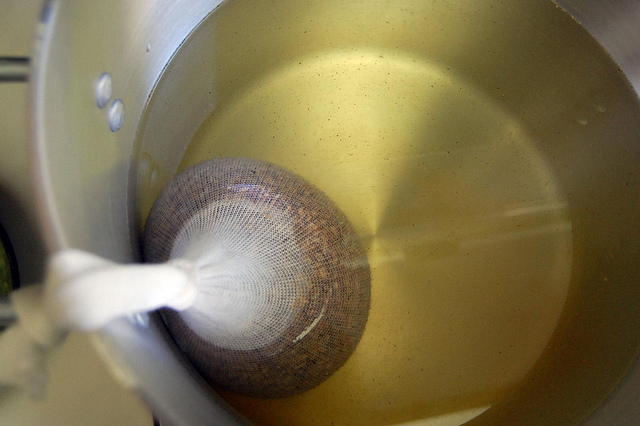
Once you have tried a diverse range of craft beer you will start to gravitate towards a couple of particular beer styles. Eventually, the inevitable question will arise, “Why don’t I make my own beer?” Home brewing is a fun, yet challenging hobby that you can pick up pretty easily. With the craft beer explosion there has also been an increase in the amount of people brewing their own beer at home. This has been accompanied by an expansion of equipment and ingredients available to those people. With quality ingredients and proper equipment, anyone can brew their own beer. Falling in love with the process is easy and can lead to a lifelong hobby.
The ingredients to brew are fairly straight forward. You need water, malted grains, hops, and yeast. Most homebrew shops sell full grain or malt-extract. To make beer you must extract sugars from malted grains, typically barley. For the experienced brewer, this means creating a mash, a mix of grain and hot water at a certain temperature, for a prefixed amount of time. For the beginner, you can buy malt extract, which is basically pre-extracted sugar, that you can add to your boil to skip the mashing stage. Once you have created your wort (a liquid that consists of water and sugars from the extraction), you boil it and add hops at various stages to create bitterness and aroma. Finally, once you have cooled your wort, you introduce yeast and let it sit for around 10 to 14 days at a standard temperature. These last two pieces all depend on the recipe.
To carry out the process above you will require a few pieces of equipment. The first is a burner to heat your water and boil your wort (I use a standard turkey fryer that I bought from Lowes). And you will also need a kettle, where you combine all of the ingredients to boil for a period of time (typically an hour). The standard homebrew recipe is around 5 gallons, so plan accordingly. A large spoon is very useful to mix up your wort during the process. A siphon is used for transferring your wort to your fermenting bucket or carboy. For the fermenter, you will also need an airlock to allow gases created by the yeast to escape the fermenter. To measure the temperature, you will need a thermometer, and also a hydrometer to measure the amount of sugar in solution. After your beer has fermented, you will need a bottling bucket, glass bottles, and bottle caps to bottle your beer. All of these pieces of equipment must be sanitized, which can be achieved with chemicals sold in your homebrew shop.
There are a variety of location where you can buy everything listed above, but I would suggest checking out Fifth Season in Carrboro. I would also suggest that you buy a book to teach you about some of the finer points of brewing. I own ‘The Complete Joy of Home Brewing’ by Charlie Papazian, which is a great resource for anyone regardless of your experience. It even includes various recipes that you can use. As I said before, with the explosion of craft brewing, most of the ingredients used by the breweries that we enjoy on a weekly basis are available to people like me and you. You can make the same delicious beer that your favorite breweries do, without the hassle of trying beers you don’t like.
You can follow Dan on Twitter @dklem87

